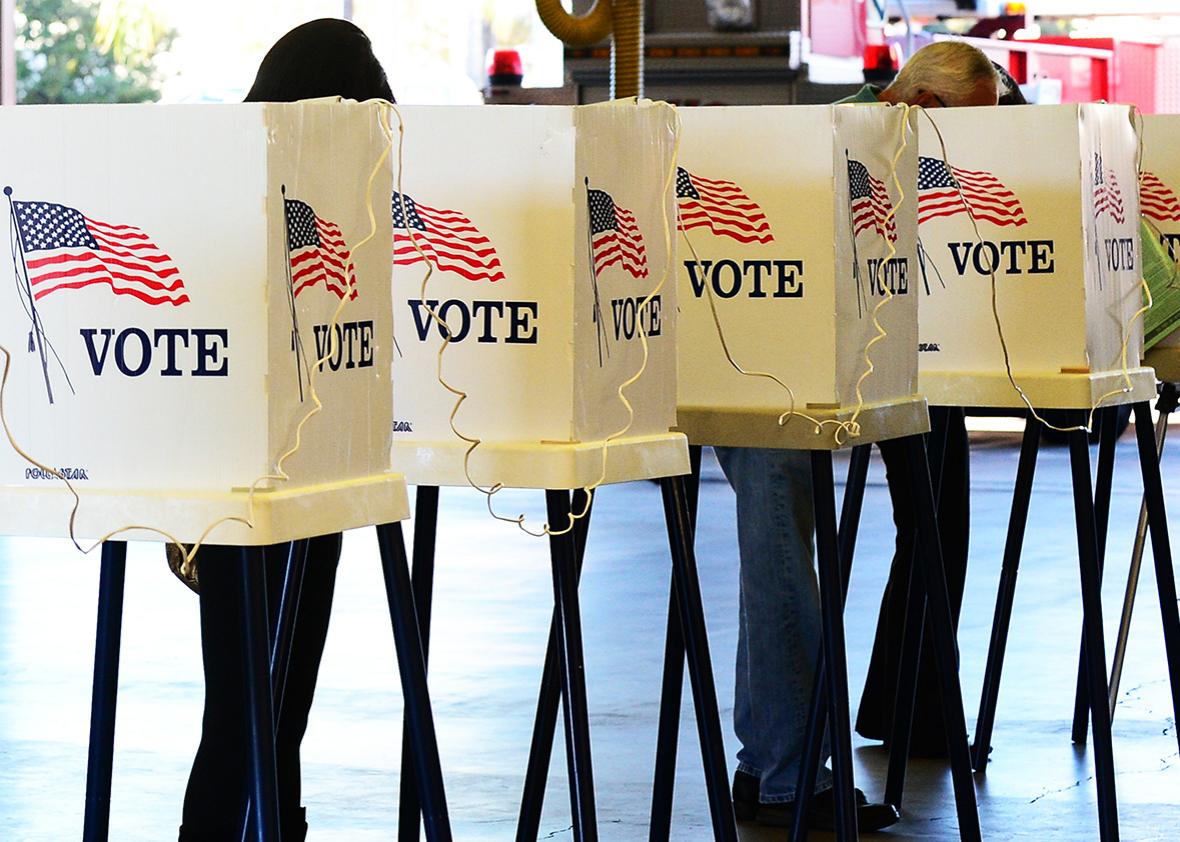The role of journalists is to bring information to people, not to protect them from it. But on Election Day, media outlets usually take the opposite approach. For decades, networks and newspapers have agreed not to reveal the information they gather through exit polling to their audiences until polls close. Journalists keep that information to themselves, campaigns track the outcome with their own methodologies, and voters are left without access to information about how the election is going in real time. This year, Slate plans to provide voters with some of that data. On Election Day, we will partner with a startup called VoteCastr to gather and publish voter-turnout information in a few key states, along with analysis of what that turnout suggests for results in the states we track and for the likely outcome of the election overall.
The posture the media have collectively adopted on Election Day is paternalistic toward voters and puts journalists in the awkward and unfamiliar position of concealing information from their readers. It’s also unsupported by social science. The news blackout that usually prevails is premised on the idea that publishing information about voter behavior may depress turnout. But such fears are unsupported by research. Academics examining the question have found no consistent effects on voter behavior. Which means that journalists are withholding information on a hunch.
Slate has challenged these assumptions in the past. We broke the embargo against publishing exit polls in 2000 and 2004. But this time we won’t be using exit polls, which were never designed to measure candidate support as elections unfold. Instead, we’ll be relying on the system developed by VoteCastr, which will compare proprietary pre–Election Day polls against turnout measured by observers precinct by precinct, in an effort to describe how the candidates are faring through the day. Why do we trust VoteCastr? Its staff is stocked with experts from both sides of the aisle. Its data analysts are veterans of the campaigns of Barack Obama and George W. Bush, and its chief strategist is Sasha Issenberg, a former Slate columnist who wrote the book on modern campaign technology. (He explains VoteCastr’s methodology in more detail here.)
Why publish this information? VoteCastr’s technique is the same one campaigns use to track voter activity on Election Day, gathering information that they use to direct last-minute campaign resources, lobby voters, and prepare for the result to come. Making similar data available to our readers will help level the playing field.
And making information available is what journalists are supposed do. As things stand, journalists on Election Day act against their instincts, colluding to keep readers in the dark, based on unsupported ideas about the utility and virtues of an information void. (The notion of keeping the hours of Election Day sacrosanct from the intrusion of voter information seems even more illogical in 2016, when you consider how widely early voting has been embraced. The voter who puts a ballot in the mail in October hardly does so in an information void.)
We will be measured and precise in how we frame and present the information; we won’t be calling Florida for Hillary at 11 a.m., or calling any states at all. We’ll simply be taking the unprecedented step of showing you Election Day as the insiders see it. It’s your election, after all.
